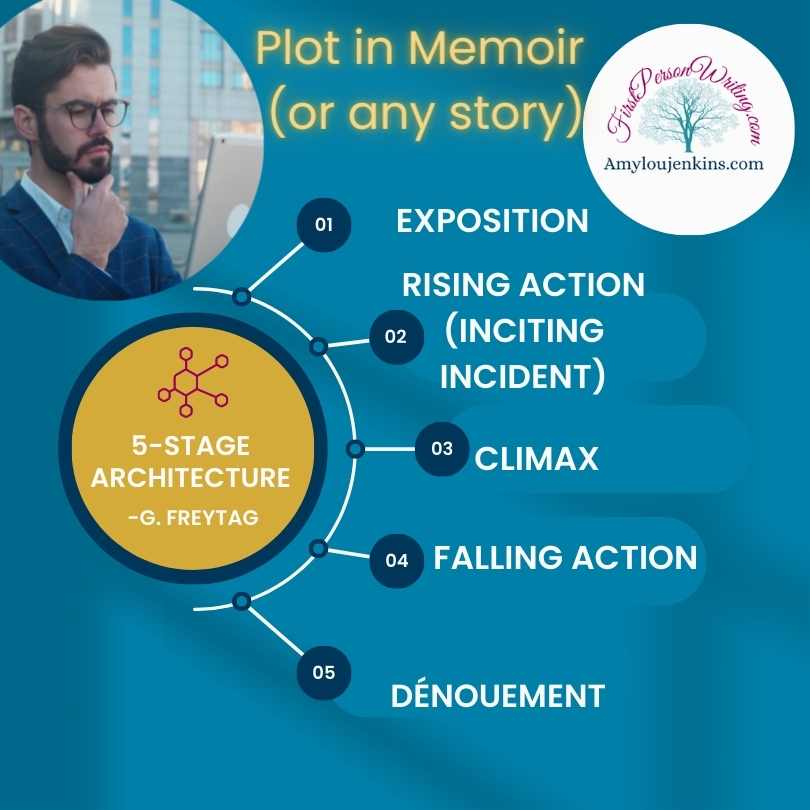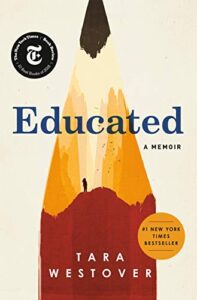
Architecture of Plot in Memoir
The Plot propels the narrative forward, captivating readers along the way. Let's explore the definition and structure of a plot in memoirs, and discuss the five-stage architecture of a plot proposed by Gustave Freytag. Find examples of memoirs with compelling plots, and explore the distinction between plot and premise.
I. Defining Plot in Memoir:
In the context of memoirs, the plot refers to the sequence of events and actions that unfold throughout the narrative. It encompasses the challenges, conflicts, and resolutions encountered by the author, shaping their personal journey. The plot provides the framework that keeps readers engaged, eager to discover the next development in the memoirist's story.
II. Gustave Freytag's Five-Stage Architecture of Plot:
Gustave Freytag's five-stage architecture, known as the dramatic structure, helps illustrate the progression of a plot within a memoir. Although originally designed for dramatic works, this framework can be applied to memoirs to enhance their storytelling. The five stages are as follows:
- Exposition:
The exposition stage introduces the essential elements of the memoir, establishing the context, characters, and initial circumstances. It sets the stage for the memoirist's journey, providing readers with a clear understanding of the memoir's world and the central conflict or theme that drives the narrative.
2. Rising Action:
During the rising action stage, the plot gains momentum. The author presents a series of events, challenges, and obstacles that heighten tension and push the story forward. This phase often introduces turning points and pivotal moments that test the memoirist's resilience and foster personal growth.
3. Climax:
The climax represents the peak of tension and intensity in the memoir's plot. It is the decisive moment where the author confronts their most significant challenge, undergoes a transformation, or experiences a profound realization. The climax often brings about a fundamental shift in the memoirist's perspective or circumstances.
4. Falling Action:
Following the climax, the falling action stage allows for the gradual resolution of the memoir's plot. The author explores the consequences of the climax, unravels loose ends, and provides closure to various storylines. This stage may include moments of reflection, reconciliation, or acceptance as the memoirist seeks to make sense of their experiences.
5. Resolution or dénouement:
The resolution stage marks the final phase of the plot, providing a sense of conclusion and reflection. The memoirist reflects on their journey, shares the insights gained, and leaves readers with a lasting takeaway. The resolution should tie back to the initial conflicts or themes, offering a sense of fulfillment or closure for both the author and the reader.
III. Examples of Plot in Memoirs:
Let's explore three memoirs that exemplify the power of a well-crafted plot:
 "Educated" by Tara Westover: Plot: The author's transformative journey from a restrictive and isolated childhood to the pursuit of education and self-discovery. Tara Westover's memoir follows her path from growing up in a strict and isolated household in rural Idaho to seeking education against all odds. The plot unfolds through various trials and obstacles, documenting her pursuit of knowledge, challenging societal expectations, and reclaiming her identity.
"Educated" by Tara Westover: Plot: The author's transformative journey from a restrictive and isolated childhood to the pursuit of education and self-discovery. Tara Westover's memoir follows her path from growing up in a strict and isolated household in rural Idaho to seeking education against all odds. The plot unfolds through various trials and obstacles, documenting her pursuit of knowledge, challenging societal expectations, and reclaiming her identity. "Angela's Ashes" by Frank McCourt: Plot: The author's coming-of-age story set against the backdrop of poverty in Ireland and his pursuit of a better life in America. Frank McCourt's memoir details his impoverished upbringing in Ireland and his family's struggle for survival. The plot follows McCourt's journey as he overcomes the harsh realities of poverty, seeks education, and ultimately leaves Ireland for a chance at a brighter future in America.
"Angela's Ashes" by Frank McCourt: Plot: The author's coming-of-age story set against the backdrop of poverty in Ireland and his pursuit of a better life in America. Frank McCourt's memoir details his impoverished upbringing in Ireland and his family's struggle for survival. The plot follows McCourt's journey as he overcomes the harsh realities of poverty, seeks education, and ultimately leaves Ireland for a chance at a brighter future in America.- "Eat, Pray, Love" by Elizabeth
 Gilbert: Plot: The author's quest for self-discovery and spiritual fulfillment through travel and personal exploration. Elizabeth Gilbert's memoir takes readers on a journey of self-discovery as she travels to Italy, India, and Indonesia. The plot chronicles her experiences, encounters, and inner reflections as she seeks to find balance, purpose, and love in her life.
Gilbert: Plot: The author's quest for self-discovery and spiritual fulfillment through travel and personal exploration. Elizabeth Gilbert's memoir takes readers on a journey of self-discovery as she travels to Italy, India, and Indonesia. The plot chronicles her experiences, encounters, and inner reflections as she seeks to find balance, purpose, and love in her life.
IV. Understanding the Difference Between Plot and Premise:
While plot and premise are interconnected, it is important to distinguish between the two:
- Premise: The central idea or concept that drives the memoir. It sets the stage for the author's exploration of experiences, emotions, and reflections. The premise provides a clear focus and direction for the memoir, establishing its purpose.
- Plot: The sequence of events, challenges, and resolutions that unfold throughout the memoir. It provides the structure and framework for the narrative, driving the story forward and keeping readers engaged.
While the premise shapes the overall direction and theme, the plot encompasses the specific events and actions that occur within the memoir, leading to the fulfillment of the premise.
A well-crafted plot in memoir or any genre plays a vital role in engaging readers and delivering a compelling narrative. Understanding the definition and structure of the plot, as exemplified by Gustave Freytag's five-stage architecture, enables memoirists to shape their stories effectively. By exploring memoirs such as "Educated," "Angela's Ashes," and "Eat, Pray, Love," we gain insight into how a captivating plot can bring personal experiences to life. Recognizing the distinction between plot and premise may set a writer on their way to delivering a page-turner of a plot that provides an emotional and perhaps intellectual ride for the reader.





















